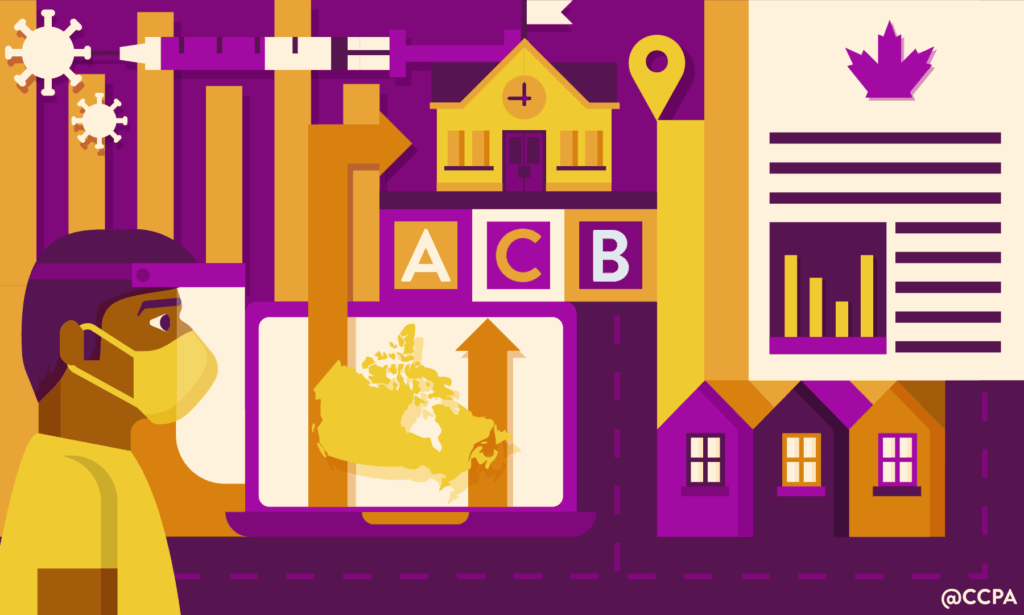The much-anticipated 2021 federal budget was presented this week with a historic investment in a national child care program and the extension of COVID-19 support programs.
Although climate change and a green economy didn’t make the headlines, the budget allocated a significant amount of money toward protecting the environment and investing in a cleaner economy—$41 billion in total, by our count.
That warrants a closer look. Where is that money going? How much of it is actually new money? And how does the government’s latest round of climate action stack up against our pre-budget hopes and expectations? Let’s dive right in.
Big claims, but no big surprises
In October 2020 the federal government allocated $6 billion to the Canada Infrastructure Bank for green infrastructure. In December the government released a new, $15 billion climate plan. And in February it announced a new $15 billion public transit fund.
Budget 2021 claims to make “$17.6 billion in additional investments towards a green recovery” on top of those previously announced commitments.
Our preliminary analysis suggests that these figures check out.* Between the 2020 Fall Economic Statement and this budget, the Canada Infrastructure Bank, the climate plan and the public transit fund are now fully accounted for. We also find about $18 billion in previously unannounced spending in this budget that is broadly related to emissions reductions, environmental protection and the transition to a lower-carbon economy (see chart).
Add it all together and we arrive at $41 billion in total “green recovery” money in Budget 2021, most of which is spread out over the next five to seven years.
Whether all that money counts as climate spending is another question. The $8.2 billion dedicated to environmental protection and climate change adaptation is important in and of itself, but it won’t necessarily help us achieve our net zero emission target.
Likewise for the skills training programs that we count as just transition spending. If we exclude those categories, there is about $31 billion in climate spending here. If we exclude previous announcements, that leaves only $7.7 billion—an average of $1.2 billion per year—in new money in this budget that is specifically dedicated to achieving net zero.
Focus on transit and clean tech
The single biggest climate-related expenditure is the aforementioned $15 billion public transit fund, which will help create more affordable, low-carbon commuting options in cities across the country. Unlike many previous public transit investments, the federal government says this fund will be a permanent fixture, offering important stability and predictability for municipalities.
The next largest expenditure is $8 billion, for the Net Zero Accelerator Fund promised in the fall climate plan. This program is intended to help decarbonize the Canadian industrial sector, including emissions-intensive industries, like steel and aluminum production, that will remain essential in a net zero carbon world. Unfortunately, it is also likely to subsidize oil and gas producers.
After that, we find more than four dozen smaller programs and initiatives. Highlights include $491 million toward high frequency rail infrastructure in the Toronto–Quebec City corridor and $964 million to advance renewable energy and grid modernization projects across the country.
Homeowners, though not renters, will benefit from a combination of $5,000 grants and $40,000 interest-free loans toward home energy efficiency improvements.
Progress on a just transition
Although the phrase “just transition” only appears once, there are a number of new programs that fit the bill. In particular, a new $470 million Apprenticeship Service fund that specifically prioritizes women, racialized Canadians and persons with disabilities is very similar to the CCPA’s own recommendations for diversifying strategic occupations in a clean economy, though with a smaller funding commitment.
Likewise, a new $55 million Community Workforce Development Program will support the development of community transition plans, which, in part, echoes our call for a Just Transition Commission to develop regional transition roadmaps.
Unprecedented yet inadequate
There is much to celebrate here. But the key takeaway from this budget, like every budget tabled by this government over the past five years, is that apparently enormous climate spending can be simultaneously unprecedented and inadequate.
By the government’s own admission, the measures announced in this budget will, at best, reduce Canada’s emissions by 36% from 2005 levels by 2030—and that includes some sketchy accounting of forestry and methane emissions.
That may be enough to meet our own mediocre climate target, but it remains inconsistent with climate science and pales in comparison to the ambitions of our peers. The UK’s conservative government just passed a law requiring the country to reduce emissions 78% from 1990 levels by 2035.
Even if we adopt a generous interpretation of what counts as climate spending, this budget commits just $31 billion—approximately $5.1 billion per year—to the cause. That’s the equivalent of 0.25% of Canada’s GDP. Given the existential threat posed by climate change, leading climate experts argue that we should be spending more like 1-2% of GDP—that’s $20-40 billion per year—to aggressively decarbonize.
A proper carbon budget would help Canada better align its fiscal budget with the realities of climate change.
Fossil fuels continue to get a pass
Not only are the dollar figures smaller than we’d like to see from a federal budget at this crucial juncture, but some of the details are concerning. Most importantly, there are several programs, including a $1.5 billion low-carbon fuels fund and a $319 million investment in carbon capture technologies, that may be disguised fossil fuel subsidies.
Despite tepid language around disruptions in “sectors like energy”, there is no acknowledgment in the budget that ongoing large-scale production of coal, oil and natural gas is irreconcilable with a net zero economy.
Missed opportunity for industrial strategy
Finally, it’s important to note that this budget lacks a clear industrial policy. In most cases, the government has opted for incentives and subsidies for the private sector rather than exhibit leadership with large-scale, direct public investments in a green economy and/or the creation of new crown corporations to drive change.
Given the enormous stakes and rapidly diminishing timeline for climate action, we can’t wait around for the benevolence of corporations to save us. We need an empowered public sector to lead.
* Federal budgets are large and complicated things and it can be difficult to pull apart just how much money is being spent and when. There may be errors in our accounting and categorization of specific programs, though we are confident that the overall numbers are generally accurate. We will update any changes if and as we become aware of them.









